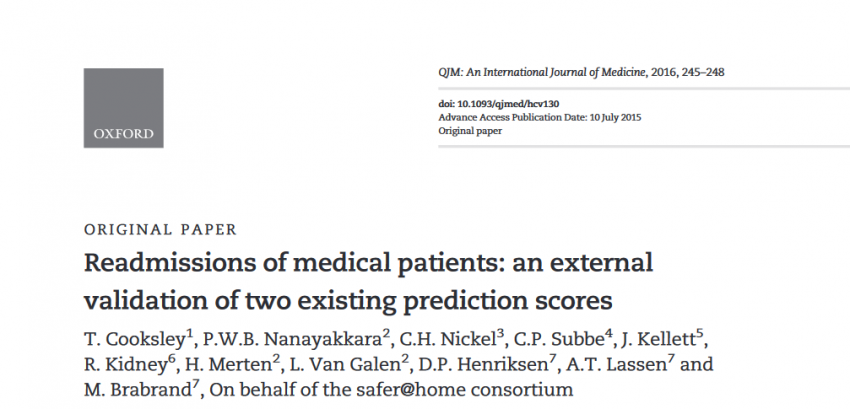Background:
Hospital readmissions are increasingly used as a quality indicator with a belief that they are a marker of poor care and have led to financial penalties in UK and USA. Risk scoring systems, such as LACE and HOSPITAL, have been proposed as tools for identifying patients at high risk of readmission but have not been validated in international populations.
Aim:
To perform an external independent validation of the HOSPITAL and LACE scores.
Design:
An unplanned secondary cohort study.
Methods:
Patients admitted to the medical admission unit at the Hospital of South West Jutland (10/2008-2/2009; 2/2010-5/2010) and the Odense University Hospital (6/2009-8/2011) were analysed. Validation of the scores using 30 day readmissions as the endpoint was performed.
Results:
A total of 19 277 patients fulfilled the inclusion criteria. Median age was 67 (range 18-107) years and 8977 (46.6%) were female. The LACE score had a discriminatory power of 0.648 with poor calibration and the HOSPITAL score had a discriminatory power of 0.661 with poor calibration. The HOSPITAL score was significantly better than the LACE score for identifying patients at risk of 30 day readmission (P < 0.001). The discriminatory power of both scores decreased with increasing age.
Conclusion:
Readmissions are a complex phenomenon with not only medical conditions contributing but also system, cultural and environmental factors exerting a significant influence. It is possible that the heterogeneity of the population and health care systems may prohibit the creation of a simple prediction tool that can be used internationally.


